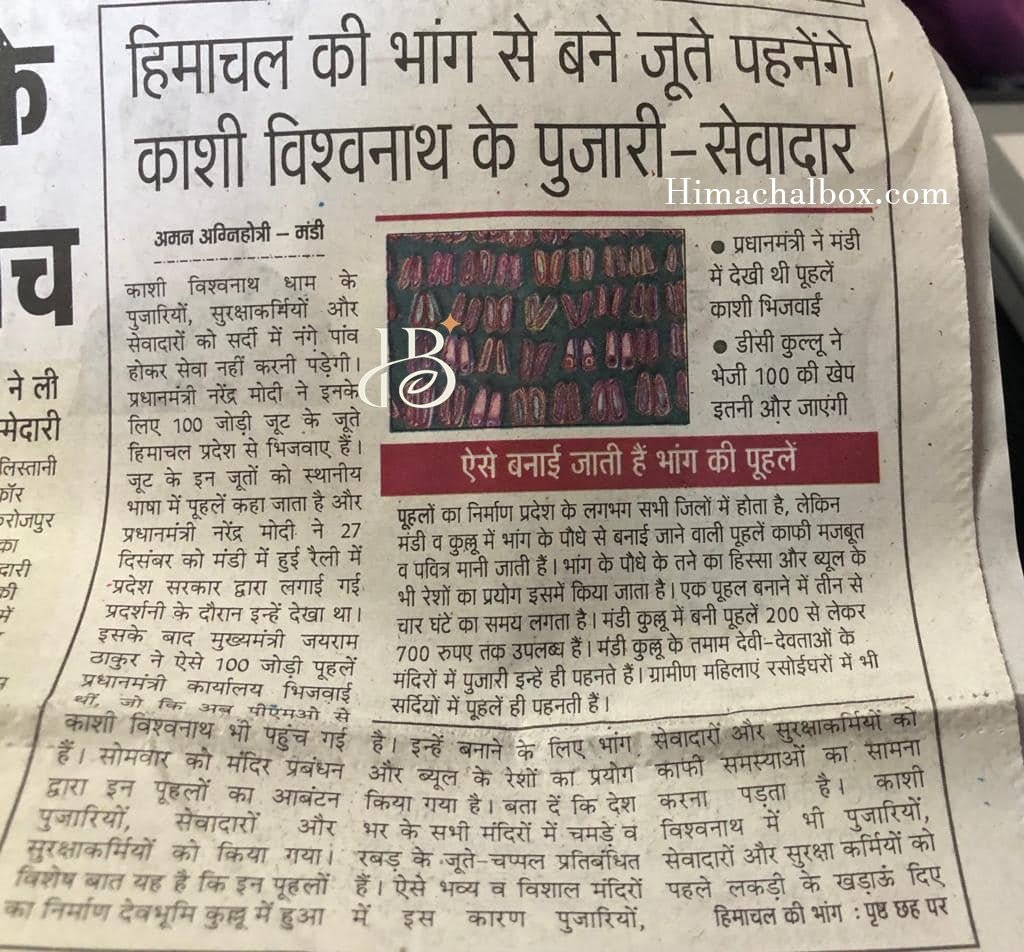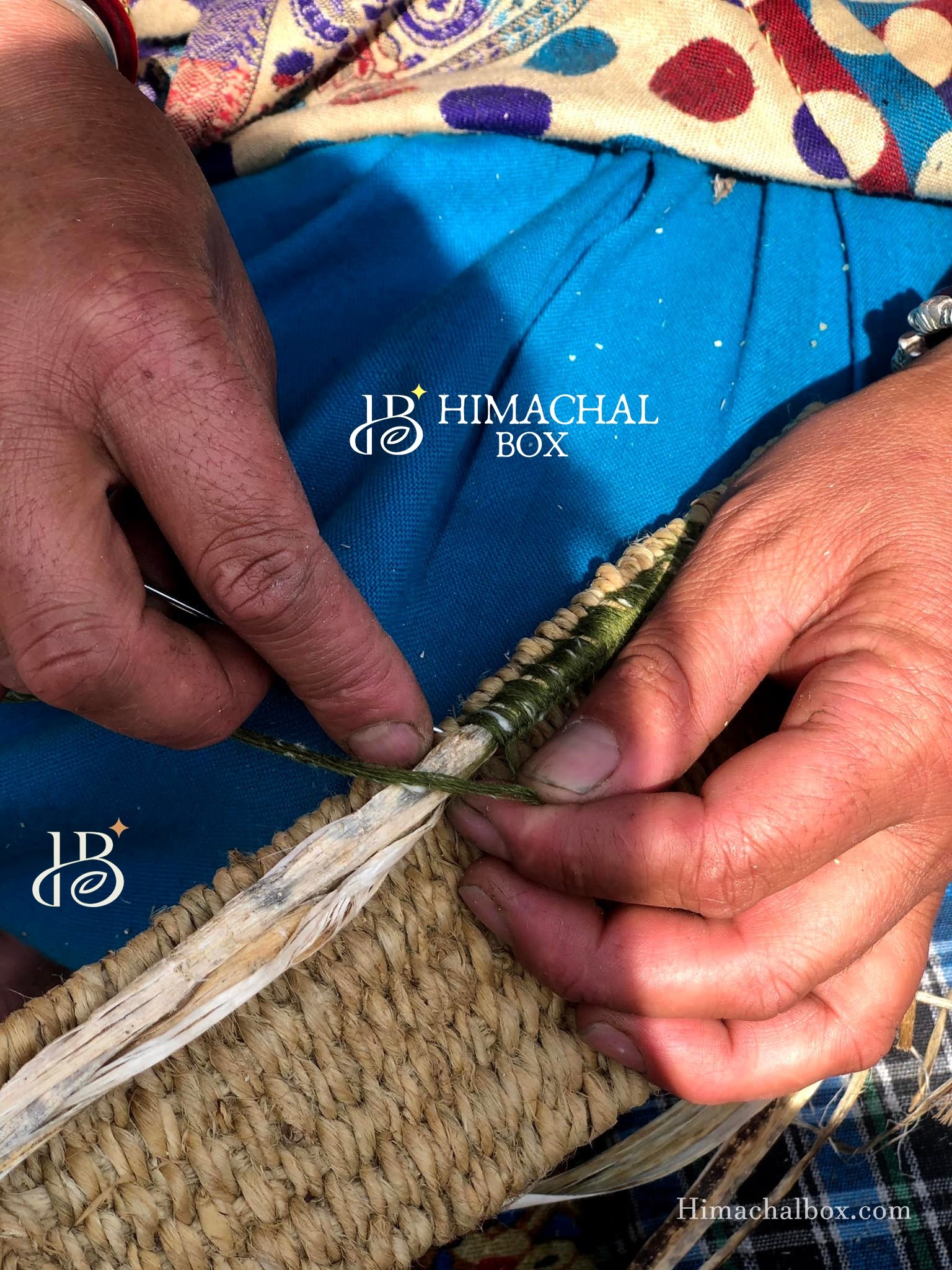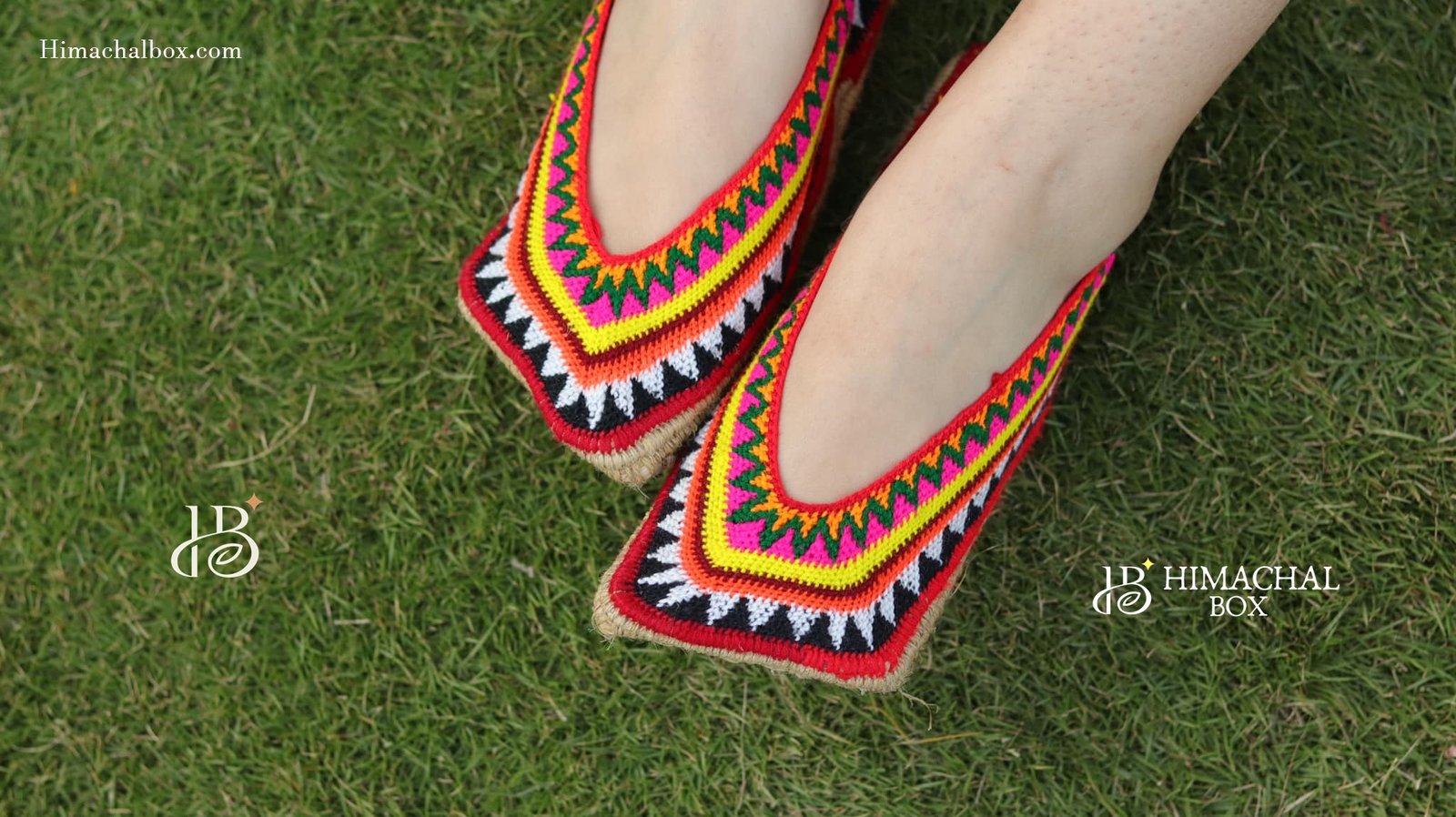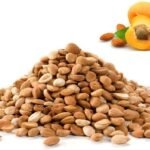
 Nestled in the serene valleys of Himachal Pradesh, the traditional craft of making Pulla slippers stands as a testament to the region’s rich cultural heritage and sustainable practices. These handcrafted slippers, made from hemp fibers, are not only eco-friendly but also embody the essence of Himachali craftsmanship.
Nestled in the serene valleys of Himachal Pradesh, the traditional craft of making Pulla slippers stands as a testament to the region’s rich cultural heritage and sustainable practices. These handcrafted slippers, made from hemp fibers, are not only eco-friendly but also embody the essence of Himachali craftsmanship.
Origins and Cultural Significance
The Pulla slippers, also known as Pula Chappal, have their roots in the Banjar Valley of Kullu district. Traditionally, they were simple in design, but over time, artisans began incorporating intricate patterns inspired by Kullu shawls and caps. These slippers are considered appropriate for religious occasions and are commonly worn within temple precincts and households, especially in kitchens where leather footwear is avoided due to cultural beliefs .
Materials Used
Hemp Fibers: Derived from the Bhang (Cannabis) plant, hemp is known for its durability and sustainability. The fibers are extracted, dried, and twisted into strong ropes, forming the base of the slippers .
Woolen Threads: The upper portion of the slippers is adorned with colorful woolen embroidery, adding both aesthetic appeal and warmth .
Crafting Techniques
Fiber Preparation: Hemp stalks are harvested, dried, and processed into long, rope-like strips through twisting and stretching. This enhances their strength and flexibility.
Spinning: The prepared hemp fibers are spun using a spindle, locally known as Takli, to create threads suitable for weaving.
Weaving: Artisans interlace the hemp threads to form the sole of the slipper, ensuring a sturdy and comfortable base.
Embroidery: The upper part is embellished with bright, contrasting geometric patterns using woolen threads, reflecting traditional Himachali designs .
Features and Benefits
Eco-Friendly: Hemp cultivation requires minimal water and no pesticides, making it an environmentally sustainable choice .
Breathable and Antibacterial: Hemp’s natural properties allow for air circulation and resist bacterial growth, keeping feet fresh and odor-free .
Lightweight and Durable: Despite their lightness, Pulla slippers are robust and suitable for various terrains, including snowy paths .
Orthopedic Comfort: Some modern versions incorporate ergonomic designs, providing arch support and reducing foot fatigue .
Revival and Modern Adaptations
In recent years, efforts have been made to revive this traditional craft. Organizations have collaborated with local artisans, especially women, to modernize designs and expand their market reach. These initiatives not only preserve cultural heritage but also provide sustainable livelihoods for the communities involved .
Conclusion
The Pulla slippers of Kullu are more than just footwear; they are a harmonious blend of tradition, sustainability, and artistry. Embracing such crafts not only supports local artisans but also promotes eco-friendly choices in our daily lives.










You must be logged in to post a comment.